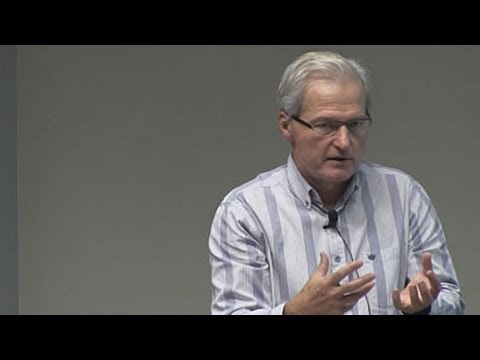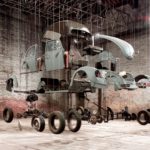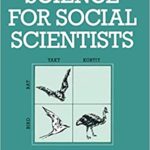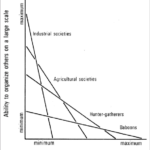
Tecnologia como ferramenta para análise sociológica (Callon 1987)
CALLON, Michel. 1987. Society in the making: the study of technology as a tool for sociological analysis. In: Wiebe E. Bijker; Thomas P. Hugues; Trevor J. Pinch. (eds.). The social construction of technological systems: new directions in the sociology and history of technology. Cambridge: The MIT Press, pp.83-103.
TECNOLOGIA COMO FERRAMENTA PARA ANÁLISE SOCIOLÓGICA
the study of technology itself can be transformed into a sociological tool of analysis. (Callon 1987:83)
ENGENHEIROS-SOCIÓLOGOS
I show that engineers who elaborate a new technology as well as all those who participate at one time or another in its design, development, and diffusion constantly construct hypotheses and forms of argument that pull these participants into the field of sociological analysis. Whether they want it or not, they are transformed into sociologists, or what I call engineer-sociologists. (Callon 1987:83)
DEPOIS DE MOSTRAR QUE ANÁLISE SOCIOLÓGICA DE SOCIÓLOGOS-ENGENHEIROS ERAM ANÁLOGAS À DE UM SOCIÓLOGO (Touraine), A QUESTÃO:
Could not social sciences in some way or another make use of the astonishing faculty engineers possess for conceiving and testing sociological analyses at the same time as they develop their technical devices? (Callon 1987:87)
O TESTE DA VERDADE PARA O ENGENHEIRO-SOCIÓLOGO (o anti-complexidade)
No more sophisticated arguments and theorizing! What mattered was to be right: to be able to prove by the very success of their innovation that French society was evolving in the way they claimed it was […]. The rest was of no account. In short, if an engineer-sociologist is to be proved right he or she has to create a new market; success is measured by the amount of profit gained. This, in all its simplicity and toughness, is the test of truth.
EDF x Renault = TOURAINE x BOURDIEU
A FACULDADE PARTICULAR DE FECHAR CAIXAS PRETAS
What is the particular faculty that engineers have (which sociologists in this case lack) of being able to evaluate the comparative merits of contradictory sociological interpretations? (Callon 1987:92))
A CONTRIBUIÇÃO ORIGINAL DOS ENGENHEIROS-SOCIÓLOGOS (heterogeneous associations):
the idea of heterogeneous associations (Callon 1987:92)
The success of the construction was measured by the solidity and longevity of the heterogeneous associations that were proposed by the engineers. For them, it was not simply a matter of supporting a biased interpretation of French society and consumer tastes. They were attempting to link together fuel cells, electric vehicles, and consumers […]. The proposed associations, and by consequence the project itself, would hold together only if the different entities concerned (electrons, catalysts, industrial firms, consumers) accepted the roles that were assigned to them. To describe these heterogeneous associations and the mechanisms of their transformation or consolidation, I introduce the notion of an actor network. (Callon 1987:93)
It is these heterogeneous associations that sociologists are unable to take into account and yet that are responsible for the success of a particular actor network. (Callon 1987:97)
[T]he sociology developed by the engineer-sociologists is concretely evaluated in terms of market share, rate of expansion, or profit rate. (Callon 1987:98)
In any event sociologists who study engineers shaping technologies have a chance to evaluate the validity of certain interpretations and to follow their successive adaptations in the light of the resistance they encounter. (Callon 1987:98)
ACTOR-NETWORK (agir em/como rede
An actor-network is simultaneously an actor whose activity is networking heterogeneous elements and a network that is able to redefine and transform what it is made of. (Callon 1987:93)
\The notion of actor network is developed in order to handle these difficulties. This notion makes it possible to abandon the constricting framework of sociological analysis with its pre-established social categories and its rigid social/natural divide. It furnishes sociological analysis with a new analytic basis that at a stroke gains access to the same room to maneuver and the same freedom as engineers themselves employ. (Callon 1987:100)
SIMPLIFICAÇÃO
Simplification is the first element necessary in the organization of heterogeneous associations. In theory reality is infinite. In practice actors limit their associations to a series of discrete entities whose characteristics or attributes are well defined. The notion of simplification is used to account for this reduction of an infinitely complex world. (Callon 1987:93)
SIMPLIFICAÇÃO e JUSTAPOSIÇÃO
There is thus a double process: simplification and juxtaposition. The simplifications are only possible if elements are juxtaposed in a network of relations, but the juxtaposition of elements conversely requires that they be simplified. (Callon 1987:95)
ABRINDO A CAIXA PRETA
Instead of being easily mastered, fuel cells wsere transformed into an apparatus whose ever-increasing elements turned out to be beyond control. A “black box” whose operation had been reduced to a few well-defined parameters gave way to a swarm of new actors (Callon 1987:94)
ASSOCIOLOGIA (o ponto de vista sociológico universal tardeano) e AÇÃO-REDE
Behind each associated entity there hides another set of entities that it more or less effectively draws toghether. (Callon 1987:94)
The extent to which an entity is susceptible to modification is a function of the way in which the entity in question summarizes and simplifies one network on behalf of another. If we wish to construct a graphical representation of a network by using a sequences of points and lines, we must view each point as a network that in turn is a series of points held in place by their own relationships. The networks lend each other their force. The simplifications that make up the actor network are a powerful means of action because each entity summons or enlists a cascade of other entities. (Callon 1987:96)
Entities are strong because each entity gathers others [“simplified and mobilized entities”]. […] Thus a network is durable […] because each of its points constitutes a durable and simplified network. […] An actor network is a network of simplified entities that in turn are other networks. (Callon 1987:96)
The solidity of the whole results from an architecture in which every point is at the intersection of two networks: one that it simplifies and another that simplifies it. It can be mobilized in other actor networks. (Callon 1987:97)
ESTABILIZAÇÃO COMO CONCRETIZAÇÃO (Simondon)
How can one describe the relationships between fuel cells and the electric motor in terms other than those of electric currents or electromagnetic forces? Not only are the associations composed of heterogeneous but their relationships are also heterogeneous. Whatever their nature, what counts is that they render a sequence of events predictable and stable. […] Each element is part of a chain that guarantees the proper functioning of the object. It can be compared to a black box that contains a network of black boxes that depend on one another both for their proper functioning as individuals and for the proper functioning of the whole. (Callon 1987:95-6)
REGULAÇÃO (resistência)
Castoriadis asserts that technology creates what nature is not capable of achieving. How does technology succeed? It succeeds y playing with the differences of resistances that exist within the environment that it uses and transforms, for this environment does not resist in any way as it does not resist stubbornly. Reality is not static because it consists of interstices that permit it to move, gather, alter, and divide; thus there is room to “make”. Whether it concerns outside nature, the neighboring tribe, or bodies of people, resistance is regulated. It contains lines of force, veins, and partially systematic progressions. […] I have only to establish a general map of the differentiated resistances that are met by the actors (Callon 1987:103 nota 13)





 O LaSPA é sediado no Instituto de Filosofia e Ciências Humanas (
O LaSPA é sediado no Instituto de Filosofia e Ciências Humanas (